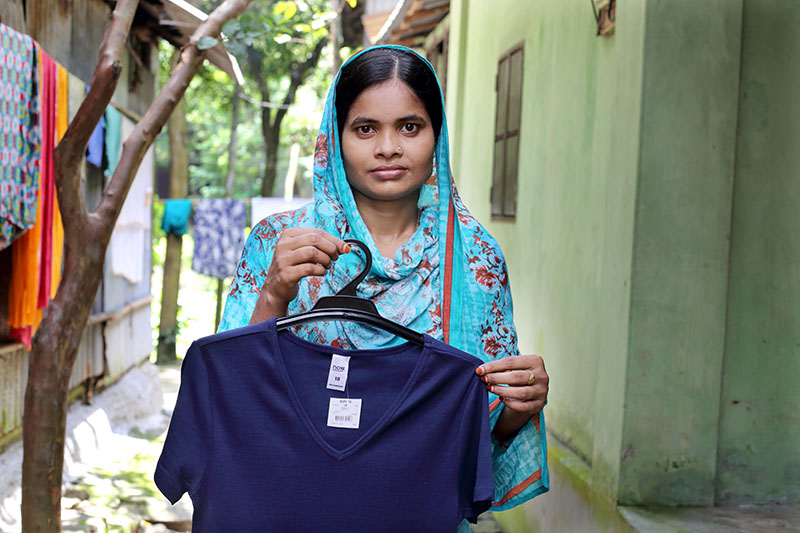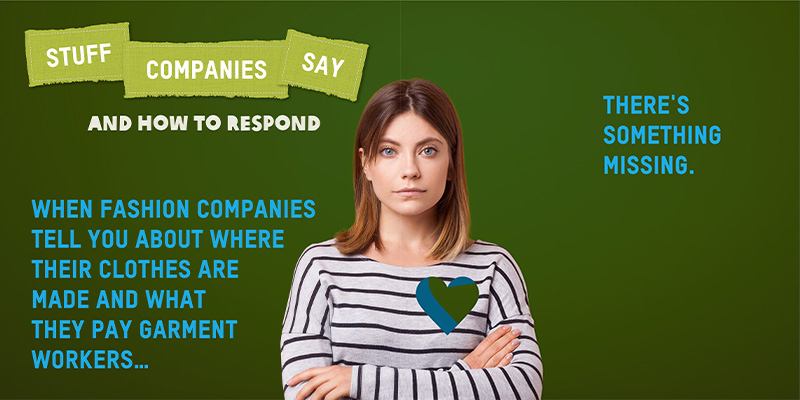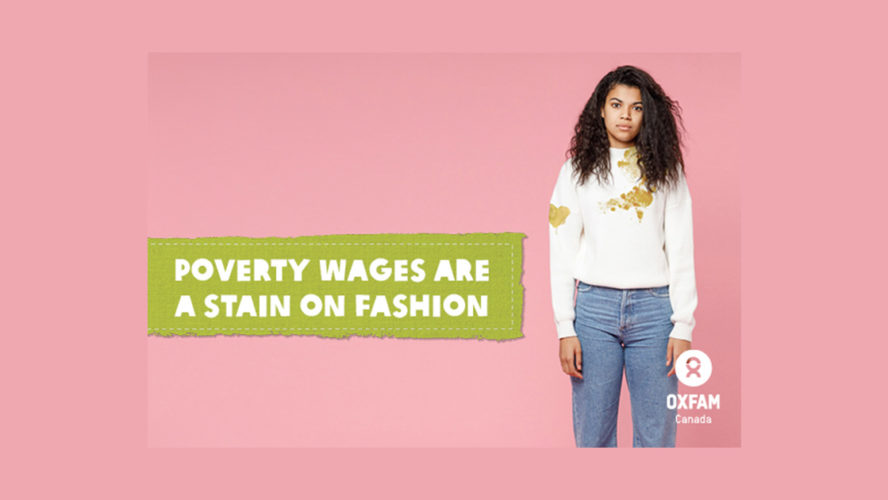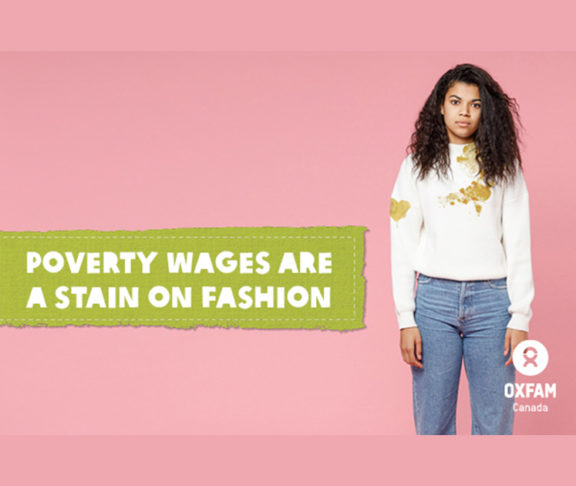
Mwangala Matakala
Campaigner, Oxfam Canada
Oxfam Canada’s What She Makes campaign continues to tackle inequality by calling on Canadian fashion brands to be transparent about their sourcing.
One year on, what has changed?
Fashion trends come and go as quickly as seasons change, yet the reality for the women who make our clothes remains the same — they do not earn enough to live a decent life. Despite the increased cost of living everywhere, fashion brands still have not committed to paying garment workers enough money to cover the basics — like food, water, and decent shelter.
Living wages are a human right, but poverty wages continue to be sewn into the very fabric of the garment sector. Wealth inequality is starkly illustrated in the garment sector, where a privileged few amass vast wealth while millions are trapped in the cycle of poverty. On average, top executives of Canadian fashion brands are paid $18,562 per day, while the women making clothes in Asia earn as little as $5 per day.

How transparent are your favourite brands?
Oxfam Canada’s What She Makes campaign asks companies to publicly disclose where they source their products so that consumers, human and labour rights organizations, investors, and regulators can ensure their rights are respected. With many global brands taking action to improve transparency within their supply chains, we rated five of Canada’s leading brands — Aritzia, Herschel Supply Co., Joe Fresh, lululemon, and Roots — to see how they stack up.
Great news — lululemon leads the pack and has done excellent work disclosing its supply chain details by providing factory names, locations, product types, and even the breakdown of workers by gender in each factory! Joe Fresh took significant strides to improve transparency by publishing factory names and locations but could go further by publishing more details like product types, number of workers, and breakdown by gender.
Unfortunately, Aritzia, Roots, and Herschel Supply Co. fell below the bar and haven’t taken significant action toward becoming more transparent. Transparency is key to implementing an ethical business model and a critical milestone to paying living wages to the women who make our clothes across the supply chain.
Transparency is key to implementing an ethical business model and a critical milestone to paying living wages to the women who make our clothes across the supply chain.
Things companies say and how to respond
In the past year, consumers have made a huge difference and caught the attention of these five brands. They stood up for the women that make our clothes and for more sustainable practices.
To help consumers respond when fashion companies tell them about where their clothes are made and what they pay their workers, we released a quick explainer. Learn more about what’s missing in Canadian fashion brands’ responses and take action online by telling them you stand with #WhatSheMakes and demanding they make a credible, public, time-bound commitment to paying a living wage.

A fundamental change for good
Ethical fashion is not only in season; it’s trending. Why? Because sustainability is not just a hashtag, it’s a lifestyle. We all buy clothes, so let’s use our voices to demand the brands we love to do better. Brands care about what their customers think, so let’s use our power as consumers to demand that Canadian brands pay a living wage.
Join us by taking the pledge to call on Canada’s leading brands to commit to paying living wages and being more transparent in their supply chains.




